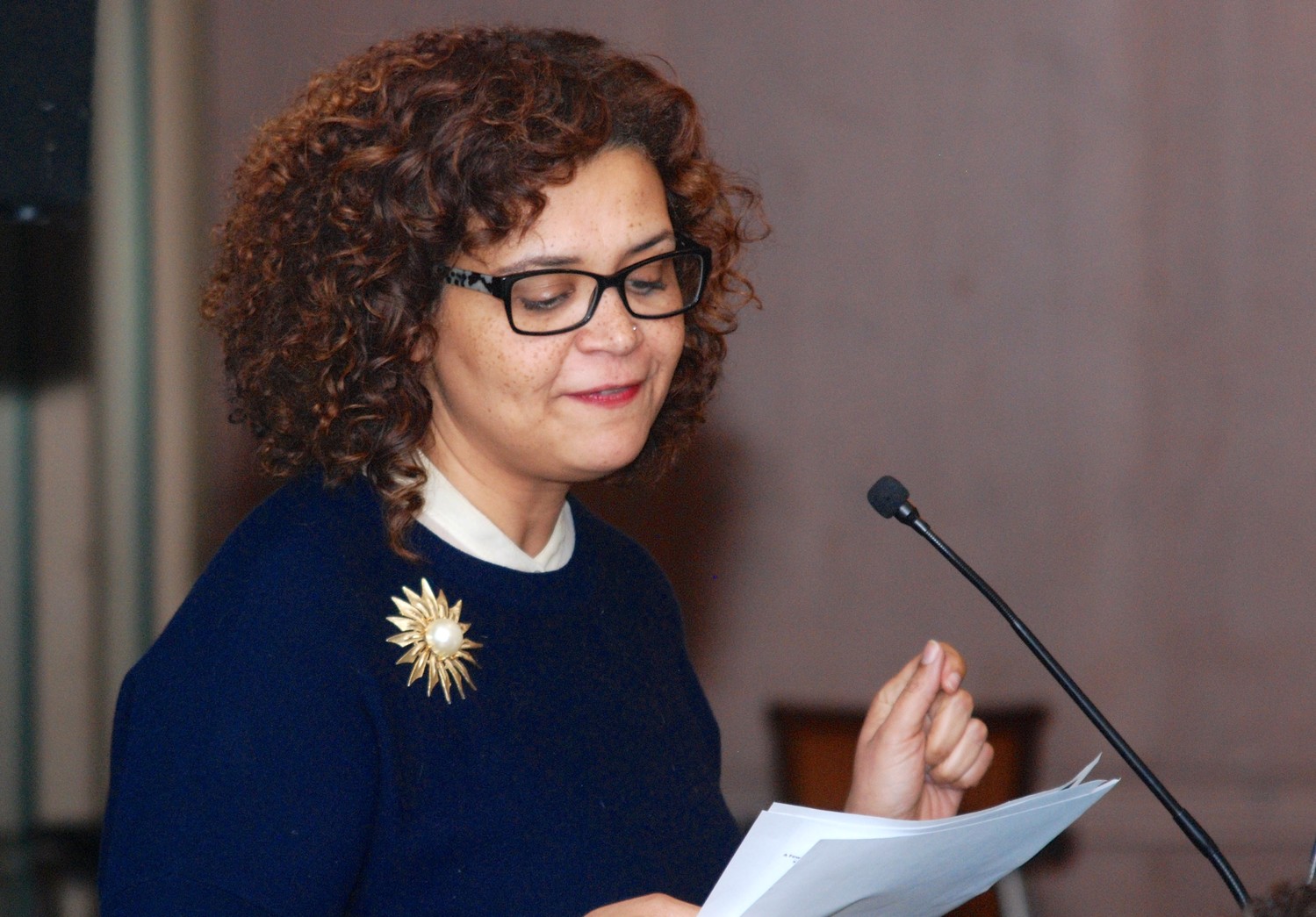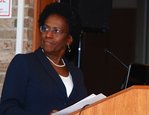Erasing racism and bias on Long Island
Discussion series aims to spark larger conversation
Elaine Gross, president of the Syosset-based nonprofit ERASE Racism, calls it “racialized school segregation.” Long Island comprises 125 school districts — some as small as one square mile — and 42 percent are all-white or nearly all-white, according to a 2017 ERASE Racism report. Meanwhile, 24 percent are majority African-American/Hispanic districts.
Despite increasing diversity on Long Island, the percentage of majority African-American/Hispanic districts actually grew from 2004 to 2016, Gross said during a two-hour talk — “How Do We Build a Just Long Island?” — at Hofstra University on Dec. 5. It was one of five such recent panel discussions at locations across the Island over 12 days.
The hope of the talks, Gross said, is to spur an honest, ongoing conversation about Long Island’s history of institutional racism and school segregation, which dates back to the middle of the 20th century and the founding of the Island’s first suburb, Levittown.
“We knew it would be a challenging discussion addressing structural racism,” Gross told the diverse audience of roughly 150 at the Hofstra Club. “We knew that Long Island is a place with history, and it is not such a pleasant history.”
She said, however, that ERASE Racism’s leadership believed that many people “wanted to do something to make a positive change,” and based on turnout at the forums, she said, that assumption proved true. Nearly all of the talks were standing- room-only, she said, with about a thousand people attending in total.
Long Island is a loose collection of hundreds of cities, towns, villages and school districts scattered across two expansive counties, with no central political leadership. With a fractured government structure, addressing inequalities in education and housing has been challenging for ERASE Racism since the organization was created in 2001, according to Gross.
The objective of the panel discussions, she said, was to “educate ourselves.” The Hofstra panel comprised:
Dr. Jonathan Lightfoot, associate professor of teaching, learning and technology at Hofstra and the university’s first director of its Center for “Race,” Culture and Social Justice.
Joye Brown, Newsday columnist, editor and reporter.
Dr. Kristal B. Zook, professor of journalism, media studies and public relations at Hofstra.
Dr. Martine Hackett, associate professor of health professions at the university.
‘Race is a myth’
Hofstra added quotation marks around “Race” in the title of its nearly two-year-old center because, Lightfoot said he believes, race is a “social construct,” intended to divide people and maintain an unequal power structure that, historically, has favored white people.
“The whole idea of race is a myth,” he said. “But racism is real.”
“Race is primarily a colonial invention,” he said. The intent of dividing people along racial lines was — and is — “to create a hierarchy to make us believe there is a difference” among people, thus allowing one race to oppress another.
The U.S. has fought many battles — internally and externally. “If war is our reality,” Lightfoot said, “then peace is possible,” if people are willing and able to set aside perceived racial differences.
Hope at the ballot box
Brown described herself as a “dispassionate observer” of Long Island, a journalist who did not grow up here, but who has made the Island her home since the early 1980s. Throughout her 35 years at Newsday, she said, she has covered any number of issues involving racism. Her job, she said, “has been to be a witness.”
Among other cases, she spoke of Long Beach, a city of nearly 34,000 in southwest Nassau. Newsday, Brown said, covered the city’s efforts in the late 1970s and ’80s to attract high-priced co-op development that would bring with it “more affluent families.” At the time, many “old folks’ homes,” several with largely minority populations, dotted the city. A number of them were targeted for demolition. “The city ripped down buildings that it didn’t have to,” Brown said.
She also spoke briefly of redevelopment in the City of Glen Cove, which is now undergoing a transformation, at least in part, from a primarily working-class municipality to one of mixed-use luxury apartment complexes. What redevelopment might mean for the city’s growing Latino community is uncertain, Brown said, noting, “That neighborhood didn’t exist 20 years ago.”
Where Brown sees hope, she said, is at the ballot box. Minority voters played an outsized role in the most recent election on Long Island, helping, for example, to unseat incumbent State Sen. Kemp Hannon, long considered a Republican power player in Albany. In a stunning defeat on Nov. 6, Hannon lost to political neophyte Kevin Thomas, a Democrat who is an attorney. A relatively new Bangladeshi-American and Indian-American community in the East Meadow area was instrumental, Brown said, in electing Thomas, who was born in Dubai to Indian-American parents. That victory helped hand control of the Senate, long held by Republicans, to the Democrats.
“In the last election,” Brown said, “people of color made a huge difference.”
Rise in radical views
Zook said she worried about the rise of extremist views in recent years. She spoke of a 2017 ABC News/Washington Post poll that indicated that roughly 9 percent of the population — or 22 million people — said they believed it was “acceptable to hold neo-Nazi or white supremacist views.”
Technology, she said she fears, is in part fueling a rise in racism across the country. “Technology no longer allows you to lie,” Zook said. “Small, local, private moments are exploding in public spaces,” largely on social media.
“We see ourselves more clearly” when incidents of racial bias “are exposed,” she said. The question, she asked, is whether “we will continue to wear blinders.”
Bias in thought and deed
Hackett spoke of “implicit bias,” the set of assumptions that all people carry with them in their minds about others, particularly those who are perceived as different. “Implicit bias does the work of structural racism without lifting a finger,” she said.
Implicit bias, Hackett said, “doesn’t just live in our brains. It presents in our day-to-day actions.”
Implicit bias, which is “based on fear,” is why a white police officer might be more likely to pull over a person of color for a possible traffic violation, according to Hackett. That officer might perceive ill — and potentially criminal — intent based on skin color, not on action.
However, “as bleak as the situation might be,” Hackett said, people “must maintain a sense of hope,” and racially segregated communities must be encouraged to “work together.”
“The fastest-growing racial group in the country is multiracial,” Zook said. “We are going to have to shift this black-white paradigm that we’ve been using for so long.”









